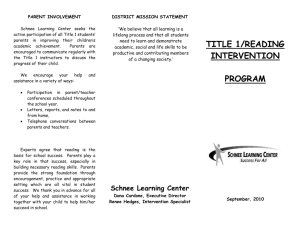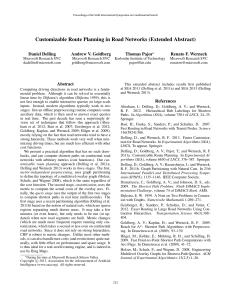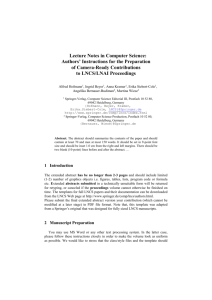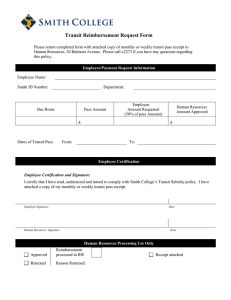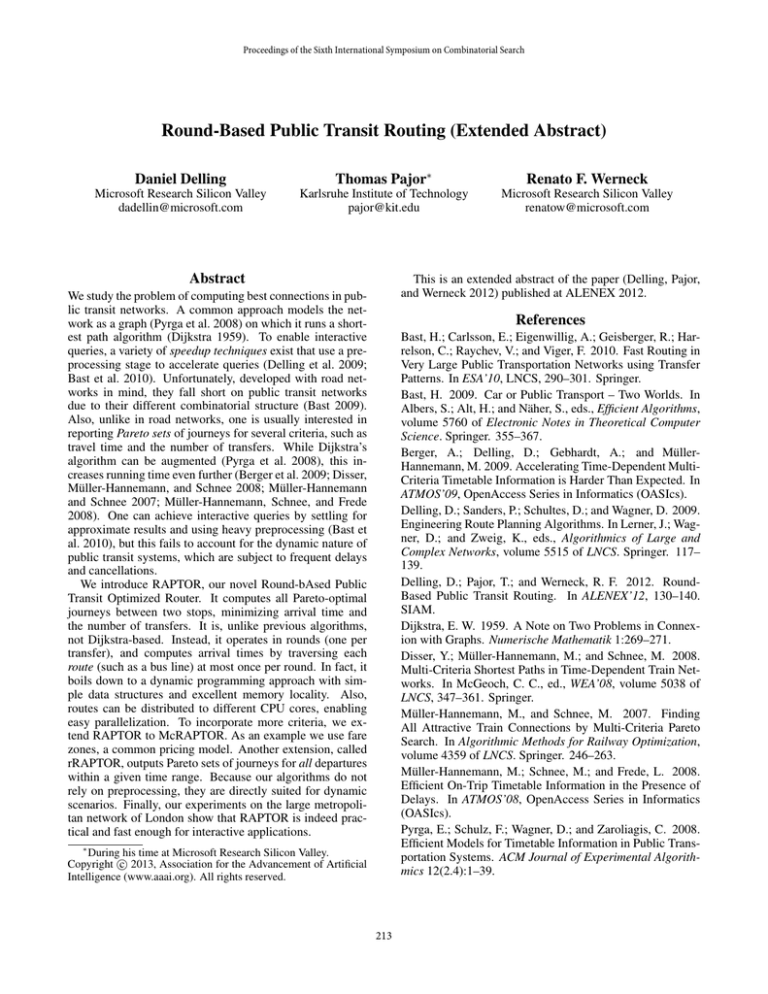
Proceedings of the Sixth International Symposium on Combinatorial Search
Round-Based Public Transit Routing (Extended Abstract)
Daniel Delling
Thomas Pajor∗
Renato F. Werneck
Microsoft Research Silicon Valley
dadellin@microsoft.com
Karlsruhe Institute of Technology
pajor@kit.edu
Microsoft Research Silicon Valley
renatow@microsoft.com
Abstract
This is an extended abstract of the paper (Delling, Pajor,
and Werneck 2012) published at ALENEX 2012.
We study the problem of computing best connections in public transit networks. A common approach models the network as a graph (Pyrga et al. 2008) on which it runs a shortest path algorithm (Dijkstra 1959). To enable interactive
queries, a variety of speedup techniques exist that use a preprocessing stage to accelerate queries (Delling et al. 2009;
Bast et al. 2010). Unfortunately, developed with road networks in mind, they fall short on public transit networks
due to their different combinatorial structure (Bast 2009).
Also, unlike in road networks, one is usually interested in
reporting Pareto sets of journeys for several criteria, such as
travel time and the number of transfers. While Dijkstra’s
algorithm can be augmented (Pyrga et al. 2008), this increases running time even further (Berger et al. 2009; Disser,
Müller-Hannemann, and Schnee 2008; Müller-Hannemann
and Schnee 2007; Müller-Hannemann, Schnee, and Frede
2008). One can achieve interactive queries by settling for
approximate results and using heavy preprocessing (Bast et
al. 2010), but this fails to account for the dynamic nature of
public transit systems, which are subject to frequent delays
and cancellations.
We introduce RAPTOR, our novel Round-bAsed Public
Transit Optimized Router. It computes all Pareto-optimal
journeys between two stops, minimizing arrival time and
the number of transfers. It is, unlike previous algorithms,
not Dijkstra-based. Instead, it operates in rounds (one per
transfer), and computes arrival times by traversing each
route (such as a bus line) at most once per round. In fact, it
boils down to a dynamic programming approach with simple data structures and excellent memory locality. Also,
routes can be distributed to different CPU cores, enabling
easy parallelization. To incorporate more criteria, we extend RAPTOR to McRAPTOR. As an example we use fare
zones, a common pricing model. Another extension, called
rRAPTOR, outputs Pareto sets of journeys for all departures
within a given time range. Because our algorithms do not
rely on preprocessing, they are directly suited for dynamic
scenarios. Finally, our experiments on the large metropolitan network of London show that RAPTOR is indeed practical and fast enough for interactive applications.
References
Bast, H.; Carlsson, E.; Eigenwillig, A.; Geisberger, R.; Harrelson, C.; Raychev, V.; and Viger, F. 2010. Fast Routing in
Very Large Public Transportation Networks using Transfer
Patterns. In ESA’10, LNCS, 290–301. Springer.
Bast, H. 2009. Car or Public Transport – Two Worlds. In
Albers, S.; Alt, H.; and Näher, S., eds., Efficient Algorithms,
volume 5760 of Electronic Notes in Theoretical Computer
Science. Springer. 355–367.
Berger, A.; Delling, D.; Gebhardt, A.; and MüllerHannemann, M. 2009. Accelerating Time-Dependent MultiCriteria Timetable Information is Harder Than Expected. In
ATMOS’09, OpenAccess Series in Informatics (OASIcs).
Delling, D.; Sanders, P.; Schultes, D.; and Wagner, D. 2009.
Engineering Route Planning Algorithms. In Lerner, J.; Wagner, D.; and Zweig, K., eds., Algorithmics of Large and
Complex Networks, volume 5515 of LNCS. Springer. 117–
139.
Delling, D.; Pajor, T.; and Werneck, R. F. 2012. RoundBased Public Transit Routing. In ALENEX’12, 130–140.
SIAM.
Dijkstra, E. W. 1959. A Note on Two Problems in Connexion with Graphs. Numerische Mathematik 1:269–271.
Disser, Y.; Müller-Hannemann, M.; and Schnee, M. 2008.
Multi-Criteria Shortest Paths in Time-Dependent Train Networks. In McGeoch, C. C., ed., WEA’08, volume 5038 of
LNCS, 347–361. Springer.
Müller-Hannemann, M., and Schnee, M. 2007. Finding
All Attractive Train Connections by Multi-Criteria Pareto
Search. In Algorithmic Methods for Railway Optimization,
volume 4359 of LNCS. Springer. 246–263.
Müller-Hannemann, M.; Schnee, M.; and Frede, L. 2008.
Efficient On-Trip Timetable Information in the Presence of
Delays. In ATMOS’08, OpenAccess Series in Informatics
(OASIcs).
Pyrga, E.; Schulz, F.; Wagner, D.; and Zaroliagis, C. 2008.
Efficient Models for Timetable Information in Public Transportation Systems. ACM Journal of Experimental Algorithmics 12(2.4):1–39.
∗
During his time at Microsoft Research Silicon Valley.
c 2013, Association for the Advancement of Artificial
Copyright Intelligence (www.aaai.org). All rights reserved.
213

